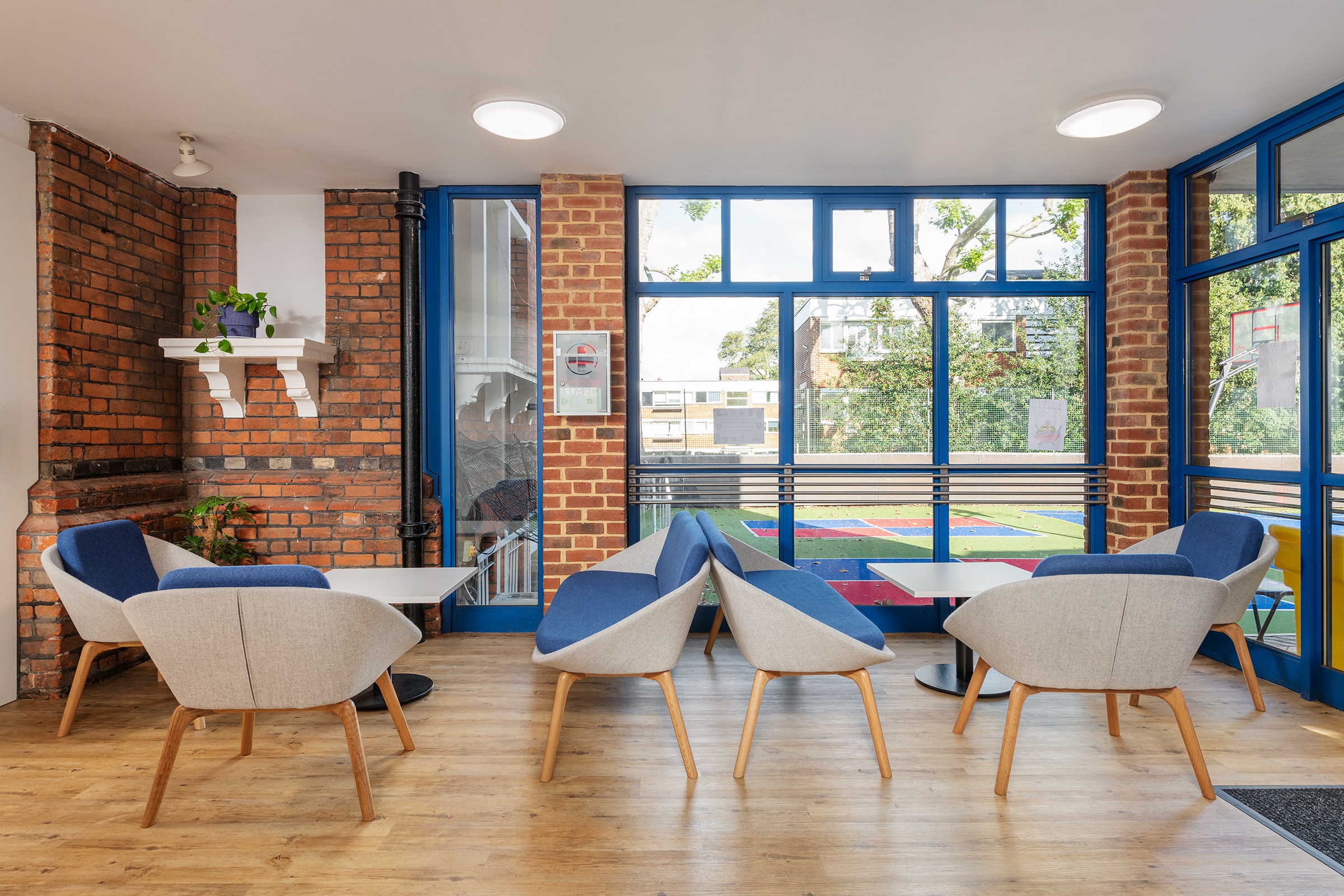Choosing the Right Furniture and Fixtures for your Secondary School Fitout
Aug 12, 2024 • 7 minutes

Designing the ideal secondary school environment is an important responsibility needing a thorough evaluation of several elements. Creating a useful, pleasant, and visually attractive learning environment for staff and students depends mostly on the furniture and fixture choices. From sturdy storage options and interesting visual aids to ergonomic workstations and seats, the correct decisions may greatly improve the whole teaching and learning experience.
Importance of Choosing the Right Furniture and Fixtures
In a secondary school environment, the furniture and fixtures can affect the welfare, efficiency, and involvement of staff members as well as the pupils. Ill-fitting or poorly selected furniture can cause physical pain, distractions, and a less than ideal classroom. On the other hand, well-chosen furniture may inspire comfort and cooperation, therefore enhancing academic achievement and a more favourable school environment.
Considerations
When selecting furniture and fixtures for a secondary school fit-out, several important factors come into play:
- Ergonomics and Comfort: For teachers and students who spend a lot of time in the classroom, ergonomics and comfort of the furniture are very vital as they help to maintain correct posture, lower strain, and offer a pleasant seated experience.
- Durability and Maintenance: Maintaining a clean and useful area depends on choosing furniture that can resist the everyday wear and tear of a busy school setting.
- Safety Features: Giving safety elements—such as strong structure, rounded edges, and anti-tip mechanisms—top priority will assist in providing a safe classroom for kids of all ages.
- Functionality and Flexibility: Selecting furniture that provides flexibility, adaptability, and several configurations can help to improve the usability of the space and provide a range of teaching and learning environments.
- Aesthetics and Branding: Aligning the visual attractiveness with the brand, values, and general design aesthetic of the institution will help to create a coherent and aesthetically pleasing surroundings.
- Sustainability and Eco-Friendliness: Incorporating eco-friendly and sustainable furniture solutions will not only lower the school’s environmental effect but also indicate a dedication to responsible practices.
Specialised Spaces
Secondary schools feature a range of learning settings outside the conventional classroom. To serve their particular purposes, spaces such as libraries, science labs, and other specialised areas require specific furniture and equipment.
- Libraries should be made to be welcoming environments that inspire research and reading. Relaxation is created by comfortable sitting choices like couches and armchairs. Study rooms with desks and task lighting give pupils somewhere set for concentrated work. Technology has to be included in the library; hence, furniture should be able to fit computers and other gadgets.
- Science labs demand furniture that prioritises safety, functionality, and durability. Laboratory benches with ample workspace and storage are crucial. Safety features like chemical-resistant work surfaces and emergency eyewash stations are essential. For students conducting experiments, stools with adjustable heights and non-slip feet offer comfort and safety.
- Teaching walls are versatile interactive learning spaces that enhance various areas within a school. These walls feature mobile whiteboards, digital displays, and adjustable components for dynamic, collaborative learning. They can be effectively implemented in different spaces, from classrooms to laboratories. In science labs, they might display molecular structures and real-time experiment data, while in other areas they could show historical timelines or language exercises. Furniture near teaching walls should be easily rearranged to accommodate different teaching and learning activities, making them adaptable to various educational needs.
Other specialised spaces, such as art studios, music rooms, and technology labs, benefit from tailored furniture solutions. These may include easels and drafting tables for art, acoustic treatments and instrument storage for music, and ergonomic workstations for technology labs.
In all these specialised spaces, flexibility is key. Modular, easily rearranged furniture allows educators to adapt spaces to different teaching methods and learning activities, ensuring the school’s infrastructure can evolve with changing educational needs.
Ergonomics and Comfort
Establishing a good learning environment depends first on making sure teachers and students are physically comfortable and well-off. Adjustable workstations, lumbar support seats, and standing desks—among other ergonomically built furniture—can help reduce muscle problems and improve posture. Including flexible seating choices—such as bean bags or wobble stools—can also help students move and participate actively in class.
Durability and Maintenance
In a secondary school environment, the furniture and fixtures have to be able to resist everyday use, regular rearranging, and sporadic mishandling. Choosing robust, premium materials—heavy-duty steel, solid wood, or scratch-resistant laminates—helps the furniture last as long as possible. Furthermore, considering the simplicity of maintenance—that includes the availability of replacement components and basic cleaning practices—can help to guarantee that the school’s investment in the fitout stays well-maintained throughout time.
Safety Features
In every learning environment, student safety comes first. Safety elements that can help avoid mishaps and injuries should be given top priority when choosing fixtures and furnishings. Round edges, anti-tip systems, strong construction, and non-slip surfaces might all fall under this heading. Furthermore, making sure the furniture satisfies pertinent safety criteria and laws will help to reassure one and show a dedication to the welfare of the school community.
Creating a Functional and Aesthetically Pleasing Learning Environment
The physical arrangement of a school may greatly affect the learning process. Schools may design an atmosphere that is both aesthetically pleasing and fit for learning by balancing use with appearance. This might entail using the strategic placement to maximise the flow of movement and cooperation inside the space and including design features reflecting the brand, values, and educational philosophy of the institution.
Sustainability and Eco-Friendly Options
Many schools are giving sustainable and environmentally friendly solutions top priority for their fit-out as environmental consciousness keeps rising. This might include adopting energy-efficient lighting systems, furniture created from recycled or renewable materials, and architectural features encouraging natural ventilation and daylight. Schools that adopt sustainable methods not only help to lower their environmental effect but also function as examples for their pupils, therefore encouraging environmental responsibility and stewardship.
Collaborating with Teachers and Students in the Selection Process
One effective approach for establishing a learning environment that really satisfies the demands of the school community is including teachers and students in the selection process. Schools can guarantee that the selected furniture fits the instructional approach, learning styles, and personal preferences of people who will be daily users by getting comments, preferences, and ideas. Through increased ownership and commitment among the school community, this cooperative approach can also help to generate more enjoyment and interaction.
Popular Furniture and Fixture Options
Regarding equipping a secondary school, there are several well-liked choices to take under review:
- Desks and Chairs: ergonomic, adjustable workstations and chairs that encourage good posture and comfort abound in offices.
- Collaborative Seating: Flexible seating choices that support group projects and conversation include modular furniture.
- Storage Solutions: To keep the classroom neat, durable and adaptable storage solutions, including cabinets, shelves, and lockers.
- Whiteboards and Projection: Excellent visual tools that improve the learning process and enable presentations include whiteboards and projection screens.
- Soft Seating: Comfortable, welcoming lounge rooms with couches, armchairs, and beanbags help to foster rest and individual study.
- Tech-Enabled Furniture: Desks and tables including built-in power outlets and device charging capability help to facilitate the usage of technology in the classroom.
Enhancing the Learning Experience through Thoughtful Furniture and Fixture Choices
Choosing the right furniture and fixtures for a secondary school is a critical decision that impacts the overall learning environment. By carefully considering factors such as student needs, functionality, aesthetics, and sustainability, schools can create spaces that inspire and support student success.
From traditional classrooms to specialised learning areas, the careful selection of furniture and fixtures plays a pivotal role in enhancing comfort, productivity, and collaboration. By investing in high-quality, adaptable, and visually appealing furnishings, schools can create environments that foster a love of learning and prepare students for future success.
Are you planning to refurbish your school? Do you have the right fixtures and furnishings in place?
Why not contact Westcountry Group today to see how we can help — call 0330 030 0330 to discuss your requirements with our Business Development team, email: sales@westcountrygroup.com or visit https://www.westcountrygroup.com/education.
Let us help you transform your school environment into an inspirational space that optimises learning and enhances student performance.






